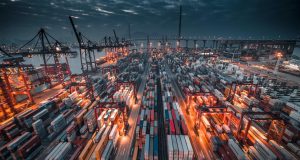Global Diligence in Supply Chain Sustainability
Due Diligence in Today’s Supply Chain Sustainability
COVID-19 has shifted the way we live our lives, both personally and professionally. This has taken a toll not only on the way we consume but also on how easy it is to forget where our products came from to provide, nurture and protect the ones we love. Implications of COVID-19 have caused many businesses to switch to a ‘sink or swim’ mindset, leaving unskilled and disadvantaged communities to feel the aftermath of pandemic-related disruption.
It’s easy to point fingers at industries and who should do what, but in fact we are all in this together. As business professionals, we have the ability to effect change, whereas millions of people at the bottom of the global value chain can only wonder when they will see their families and if the life they’ve been forced into will ever stop.
It’s our responsibility to shift our sourcing patterns to bring about sustainable supply chain practices, to provide the men, women and children with a life outside the deception that has enabled people like you and me to have the sense of security, as COVID continues to affect those whose voices are not being heard.


The Race to Supply Chain Sustainability
During this economic uncertainty, it is worth highlighting that many companies have stepped up to the plate to take the initiative on their sustainable supply chain practices before legislation has come into effect. Not only have initiatives been taken, but corporations that were one step ahead of the game have significantly reduced their modern slavery business risks, increased stakeholder acceptance, and put an immense amount of pressure on their competitors to follow suit to sustain market shares. With increasing expectation from stakeholders on supply chain sustainability and the need to identify where modern slavery business risks lie, businesses are scrambling to find a solution.
Unfortunately, solutions to supply chain sustainability are not as simple as a checklist, and neither is there a cookie-cutter approach. Each industry has its own set of needs, so they require personalised processes to identify what strategy will work best to eliminate their modern slavery business risks.
For example, company ABC has ten factories spread across three countries. Each country has its own recruitment agencies to source workers from two of the surrounding countries that they operate in. Company ABC publishes its anti-slavery policies and codes of conduct annually, ensures that it complies with local labour laws, carefully selects its supply chain mapping, conducts yearly audits, and ensures a high standard of purchasing practices. Company ABC believes that its internal work and efforts in its sustainable supply chain practices have greatly reduced or eliminated the risk of modern slavery in its business.
However, company ABC has not taken into account the roles and responsibilities of its suppliers and sub-suppliers into consideration. Although company ABC has committed to and worked towards a sustainable supply chain, deficiencies in its suppliers and sub-suppliers’ policies, codes of conduct, complicity with local labour laws, supply chain mapping, audits and training have all been missed as part of the process.
This example demonstrates how preventing modern slavery and eliminating business risks quickly become a challenging and daunting task that requires knowledge and expertise to strive towards a sustainable supply chain.
Steps Towards Supply Chain Sustainability
Both small and medium-sized enterprises and multinationals are often faced with the ‘how’ and ‘what’ should they be doing to manage the business risk of modern slavery. Collaborating with non-profit organisations is a company’s best method to work towards sustainable supply chain practices. Non-profit organisations in the anti-modern slavery space have specialised expertise, resources and tools to work with and identify modern slavery challenges specific to each industry.
Both free and paid resources are widely available to help the private sector to enhance and empower sustainable business practices through supporting companies to navigate the anti-slavery landscape. Although cookie-cutter strategies don’t exist, it’s good to understand how and what can be implemented today to set organisations up for success.
1) Knowledge
Understanding industry best practices is a great first step. There are online search tools that help businesses to dive deeper into industry-specific topics by searching archived news articles, blogs and websites from credible resources to understand the complexities of managing the business risks of modern slavery.
2) Roles and Responsibility Checklists
It’s important to know who and what managerial position within an organisation can play an important role in addressing modern slavery compliances and risks within supply chains. Understanding how decision-makers and employees contribute to preventing modern slavery is an essential part of a company’s modern slavery strategy.
3) Free Online Modern Slavery Toolkits
Workers’ vulnerability, workplace pressures, and health and safety concerns are ongoing challenges that impact business sustainability and profitability in the short, medium and long term. Managing supply chain sustainability has been and will continue to be a challenge; therefore, accessing free toolkits to mitigate and prevent modern slavery is key to managing stakeholder expectations.
4) ESG Modern Slavery Indicators
Indicators that articulate sustainability frameworks with stakeholders, such as ESG indexes, provide measurable and attainable data. Measuring the ‘S’ in ESG has been a cornerstone project that the Mekong Club has been developing for modern slavery indicators.
Implementation of indicators has proven to be an effective way to effect change and has already led to victim identification within supply chains.
5) Industry Benchmarking
Understanding where a business is with its modern slavery strategies against industry benchmarks provides an overview of how much work needs to be done. Supply chain sustainability starts with knowing what business risks are currently present and what metrics are being achieved. With governments and regulators globally clamping down, more companies are required to do everything in their power to present their efforts; otherwise, they risk condemnation and brand reputational damages.
One way to do this is to take a Anti-Slavery Scorecard self-assessment. This confidential tool allows companies to identify how their modern slavery strategies rate on a scale of one to a hundred. The score received acts as a comparative to the average scores within modern slavery supply chain sustainability. The free assessment reviews existing performances on modern slavery initiatives, identifies gaps between current and desired performance, and helps managers implement actions to improve performances.
Identifying and addressing modern slavery is a major obstacle to achieving supply chain sustainability. However, with the right training, tools and collaborations, it is possible to make a positive impact to protect and release the men, women and children who have been forced into working against their will.
Author: Nolan Clack
FAQ
-
Why should we care about modern slavery when it comes to supply chain sustainability?
-
What are some the modern slavery trends now?
-
Where can I access modern slavery toolkit related to supply chains?
-
What are the modern slavery risks in supply chains?
-
Where can I access ESG modern slavery indicators?

